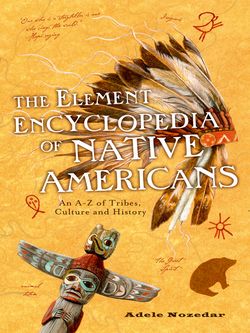Читать книгу The Element Encyclopedia of Native Americans: An A to Z of Tribes, Culture, and History - Adele Nozedar - Страница 66
ARROW
ОглавлениеIt was very important that the main shaft of the arrow was as straight as possible. The pithy canes used for these shafts were selected with care, and hung in bundles above a fire—the central fire in a tipi was ideal—to further straighten and season them. Afterward, the shafts were smoothed and polished with stone tools. Initially intended for hunting animals, a shallow groove would be carved along the length of the arrow so that, once the arrow had pierced its target, the animal’s blood would continue to flow along this groove, not only weakening the prey as it lost blood but also enabling the hunter to track the animal as the blood splashed the ground.
The “flight,” or feathered end of the arrow, was actually made from feathers and helped the weapon fly through the air. In the main, feathers from the wild turkey or the eagle were preferred, and of these birds, the wing feathers were best for the purpose. Using feathers from the same wing meant that the arrow had a twisting, spiraling flight pattern. Most arrows had three feathers fixed to them, set at regular intervals around the end of the shaft. These feathers were fastened with glue (probably made from ground bones) and further strengthened with sinew tied around them.
The actual arrowhead could be made from a number of different materials: knapped flint, copper, bone or horn, or the tips of antlers. The coming of the white man meant that iron was introduced to the Natives, and so this metal was used to make arrow tips, too.
Hunting arrows did not have the distinctive barbed shape that’s often seen; this meant that the arrow could be removed easily from the animal. However, arrows that were intended for use in war were complete with the barb, which made them almost impossible to remove without doing further damage to the enemy. The barbs of these arrows were sometimes tied to the shaft quite loosely so that there was more chance of them remaining painfully embedded in the flesh of the victim.
Different tribes preferred slightly different types of arrow; experts can differentiate these sometimes subtle distinctions. Plains tribes, for example, liked a short arrow with a long feather. Native peoples also marked their own arrows so that they were identifiable. It was always good to know without a shadow of a doubt whose blow had killed the enemy.
